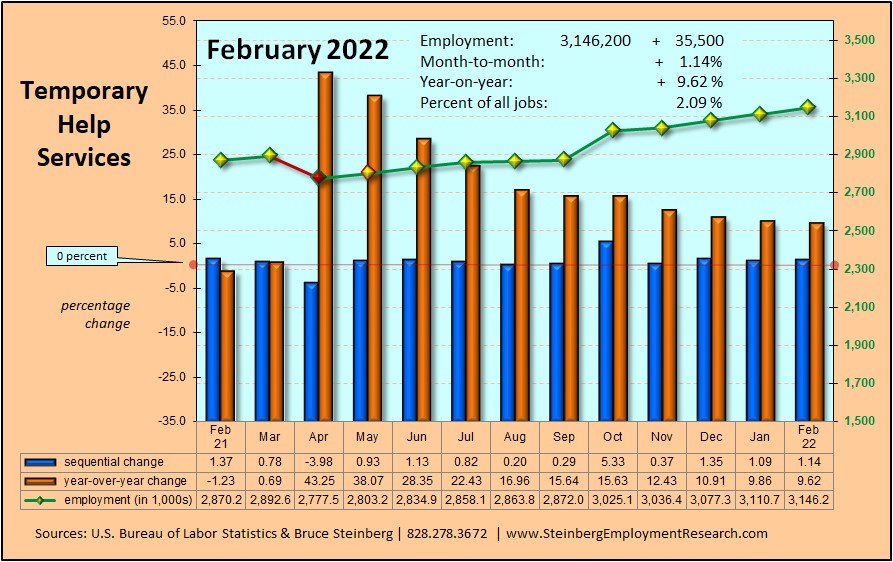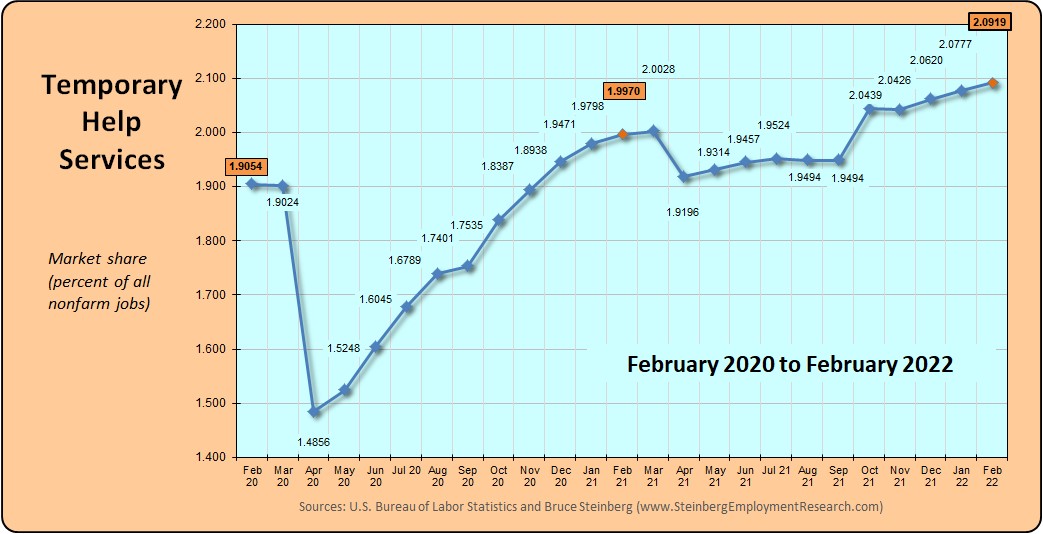Bruce Steinburg’s October Employment Situation found that “the unemployment rate was marginally up to 3.6 percent in October but still near 50-year lows.” Temporary jobs saw a 0.3 decrease from September.
The October Employment report has detailed updates on job trends in all sectors. Send it to your staffing colleagues to keep your team up to date:
October 2019 Employment Report
The unemployment rate was marginally up to 3.6 percent in October but still near 50-year lows. The number of employed persons increased as did the number of unemployed persons as the size of the labor force also increased … see the Household Survey section below for more details and explanations
Despite striking GM workers (striking workers do not receive a paycheck from their employer so those jobs are not included in the overall job count nor are those workers considered as unemployed) and U.S. Census dismissing many temporary Census workers because their tasks were completed, the number of nonfarm jobs increased a respectful 128,000 in October. which was not too far off the 180,000 job growth of September if striking workers and Census staffing activity are taken into account; however, in October 2018, total nonfarm jobs increased by 277,000.
Overall private-sector hourly wages were up 0.21 percent in October, or six cents, from September and up 3.03 percent, or 83 cents, from October 2018; both gains in hourly wages are consistent with recent trends.
But Temporary help services dipped down in October after two months of consecutive gains
Jobs Report
Private-sector jobs were up 131,000 in October, which was below the 167,000 increase of September, but the GM strike meant that the jobs of the striking workers were not counted. A year ago in October 2018, private-sector jobs increased 285,000.
The private Goods-producing sector was down 26,000 jobs in October and the decline was pretty much all due to the GM strike. In September, there was an increase of 7,000 goods-producing jobs; a year ago in October 2018, it was up 60,000.
-
Manufacturing was down a total of 36,000 jobs in October with its motor vehicles and parts subsector declining by 41,600 jobs [do we have to mention because of the GM strike? — ed.]. In September, manufacturing was down 5,000 jobs and a year ago in October 2018, manufacturing was up 29,000 jobs.
-
The Construction sector continued to build jobs and gained 10,000 jobs in October after increasing by essentially the same amount of 11,000 in September; a year ago in October 2018, it added 25,000 jobs.
- Mining and logging was flat in October after adding 1,000 in September; a year ago in October 2018, it was up 6,000.
The private Service-providing sector increased by 157,000 jobs in October, which was essentially the same as the 160,000 in gained in September; however, a year ago in October 2018, it increased by 225,000.
-
The Retail trade sector’s performance reversed its recent trend with a gain of 6,100 jobs in October after adding a similar amount of 6,700 in September; a year ago in October 2018, it contracted by 9,900 jobs.
-
The Wholesale trade sector increased 10,800 in October and that was a nice improvement from September’s gain of 7,100; a year ago in October 2018, it was up 6,700 jobs.
-
The Transportation and warehousing sector continued to be on the move with a gain of 9,900 job in October that followed growth of 6,300 in September; however, a year ago in October 2018, it increased 24,300 jobs.
-
Financial activities added 16,000 jobs in October and that was double the 8,000 it added in September; a year ago in October 2018, it increased 14,000 jobs.
-
The Professional and business services sector experienced growth of only 22,000 in October and that was less than the 37,000 gain in September; a year ago in October 2018, it was up 55,000. Computer systems design and related services was up 4,500 in October, which undoubtedly a welcome change from September’s marginally decline of 700 jobs. Management and technical consulting services was up 7,200 in October that was an improvement from the 4,900 increase in September. Architectural and engineering services was up 2,500 jobs in October, which a bit better than the 2,000 growth observed in September.
-
The Education and health services sector added 39,000 jobs in October that was less than the 49,000 increase in September. Hiring in home health care services continued by adding 4,200 in October although less than the 4,700 increase of September.
-
The Leisure and hospitality sector added 61,000 jobs in October and that followed a gain of 45,000 in September; a year ago in October 2018, it was up 79,000.
The total number of Government jobs was down 3,000 in October and that can be traced to the federal government’s U.S. Census dismissing about 20,000 temporary census workers. State government added 3,000 while local government added 11,000 and the federal government declined by 17,000.
Temporary Help Services Roundup
Temporary Help Services Roundup
The number of temporary help jobs in October was 3,040,400 and that works out to a 0.3 percent decline from September and a 0.2 percent year-over-year decrease. The trend for the past year has been essentially flat. Based upon anecdotal comments, undoubtedly if more people were available to work as temporary workers, this sector’s performance would improve.
For a chart of temporary help’s growth from January 1991 to October 2019 and comparing its trend to total employment, click here
In October 2019, temporary help services market share of all jobs fell to 2.0010 percent from well below a year ago in October 2018, when it was 2.0320 percent, and two years ago in October 2017, when it was 2.0145.
Household Survey
The unemployment rate ticked up to 3.6 percent in October, mainly due [to] the labor force growing faster than people could get hired.
The number of employed persons increased by 241,000 as the number of unemployed persons increased 86,000 at the same time the size of the entire labor force increased by 325,000. However, there were 118,000 fewer people considered as not in the labor force in October.
The labor force participation rate ticked up 0.1 to 63.3 percent in October but the employment-to-population ratio was unchanged at 61.0 percent from the previous month.
BTW, we maintain an updated table of many major employment as well as other economic indicators here or here for the mobile verison.













